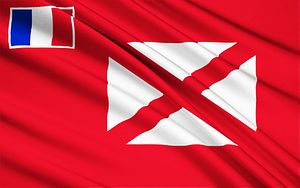In the tiny French South Pacific collectivity of Wallis, two would-be kings have gone head to head in a dramatic battle for the throne.
A largely Polynesian nation, Wallis and its sister island Futuna were colonized in 1842 and initially administered as part of New Caledonia. Since becoming a French overseas territory in 1959, the islands have been administered by a prefect appointed by Paris. Whilst the prefect alone administers most sectors of government, they have no influence over matters of custom in Wallis and Futuna. Rather, custom is the province of the three kings: the Lavelua (the king of Wallis), the Tuiagaifo (the king of Alo) and the Tuisigave (the king of Sigave). Wallis and Futuna are administered in three separate districts that correspond to these ancestral kingdoms.
The current controversy concerns the kingdom of Wallis. The island of Wallis, locally known as Uvea, has been ruled over by generations of the Takumasiva Dynasty since the early 17th century. The modern era has seen the monarchy undergo a series of positively theatrical twists and turns that rival not only the scandals of the British royal family, but the titanic clashes between the Lannisters and the Starks.
The 50th king of Wallis was Tomasi Kulimoetoke II, who ruled over Wallis from 1959 till his death in 2007. In 2005 he came dangerously close to losing his throne. Following his grandson’s conviction for manslaughter of a pedestrian whilst drunk-driving, the king gave his grandson sanctuary in the palace, thereby preventing his arrest. Kulimoetoke II rejected the authority of French penal law in Wallis, claiming that the incident should be dealt with through customary law. Following violent riots and public calls for his deposition, the king eventually relented and released his grandson to serve time in New Caledonia. Kulimoetoke II managed to stay in power until his death in 2007 brought his 48-year rule to a close.
As with all long-serving monarchs, his passing would herald significant change for the nation. The key complication is that the Wallis throne is not hereditary. After six months of mourning and respectful silence on the topic of succession, the next king was eventually crowned in 2008. The Customary Council of Ministers chose Kapiliele Faupala as the new leader of Wallis, despite the outcry of some powerful families who boycotted his coronation.
King Kapiliele Faupala’s reign exposed further tensions between the customary powers and French legal authority. His increasing interference in political matters — most notably, his role in sacking two prime ministers in 2014 — led to his deposition by the royal clans later that year. For the last two years the throne has remained vacant.
In April 2016 the Wallisian chiefs announced that Tominiko Halagahu would be the new king. Halagahu comes from a powerful family whose royal lineage can be traced back over a dozen generations. This raised the ire of the rival royal families, who argued that the chiefs had gone beyond their mandate and usurped the powers of the traditional families. They claimed that the role of the chiefs should be limited to the ceremony of the coronation itself, not the appointment of the king. Importantly, the former king’s family — the Kulimoetoke clan — also opposed the appointment of Halagahu.
Ignoring their protests, the chiefs went ahead and crowned Tominiko Halagahu at a surprise ceremony in his district in late April. Two days later, the families hastily convened their own council of chiefs, and crowned Patalione Kanimoa as a rival king. Since Halaghu was crowned in his own district, he was not in the royal palace at the time. As such, his opponents stormed the palace and have installed Patalione Kanimoa on the traditional throne.
These developments place the French government in a difficult situation, with the prefect refusing to recognize either king and urging both factions to obey the law. New Caledonia’s public broadcaster has announced that a decision as to who is the rightful king will be resolved over the next few days, but it is unclear from whose authority this will stem. Whilst Halagahu was arguably crowned by the rightful assemblage of chiefs, the faction supporting Patalione Kanimoa claim that his “backdoor” coronation in his district was illegitimate, and that only Kanimoa’s coronation was performed in accordance with the Wallisian sacred procedure.
The prefect has never been an arbitrator on matters of custom. Carving out any role as a decision-maker within this royal conflict is therefore new and uncomfortable territory for France, which has long maintained that they will not interfere in customary matters. Extra police have been called in from New Caledonia, but the upheaval continues. As New Caledonia heads toward a referendum in 2018, and the chiefs of Futuna hint at dissatisfaction with continued French rule, the developments in Wallis raise difficult questions for France over the viability of its Pacific collectivities, and the uneasy tightrope that must be trod between legal and customary authority.
This article was originally published on Young Australians in International Affairs blog, Insights. It is reprinted with kind permission.

































